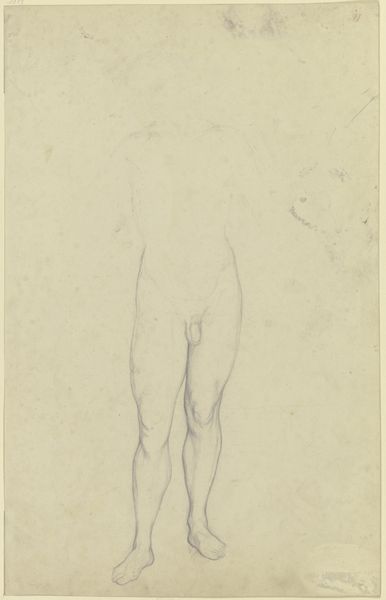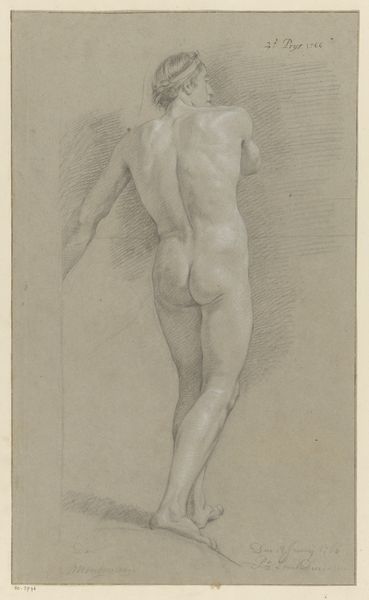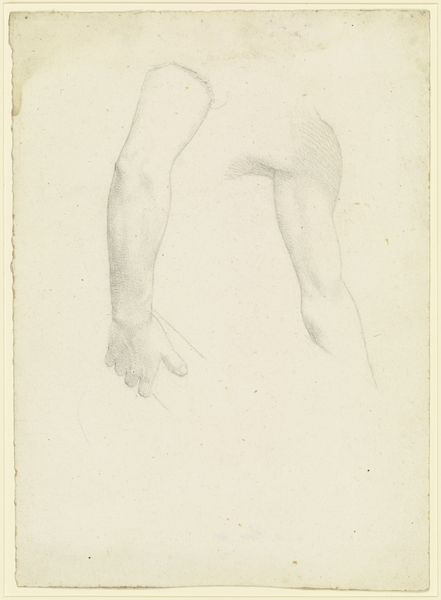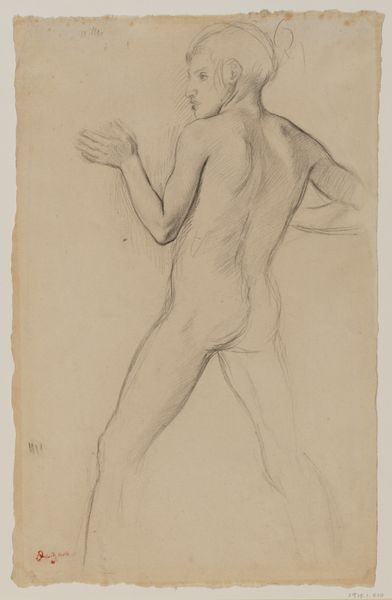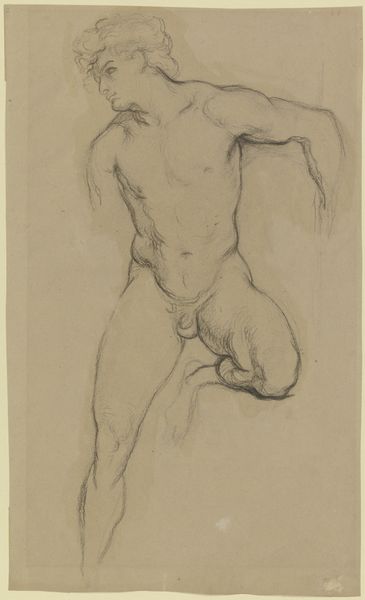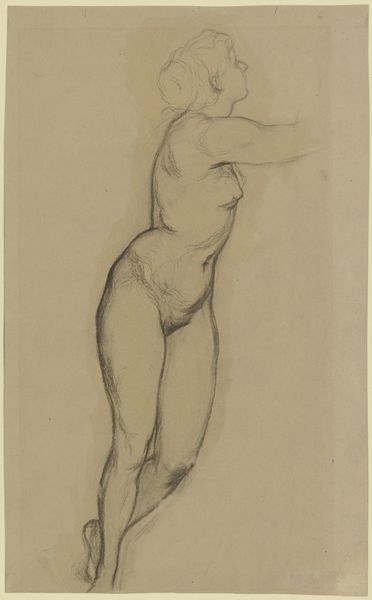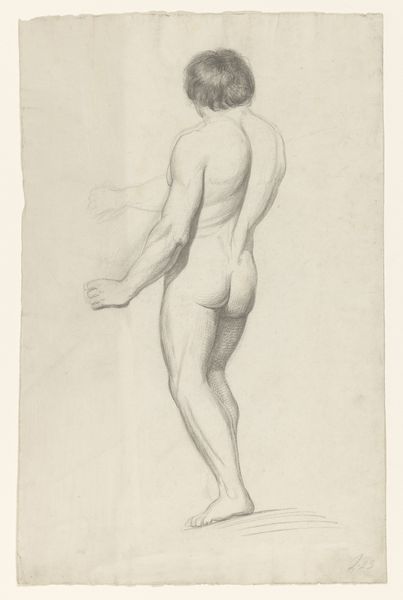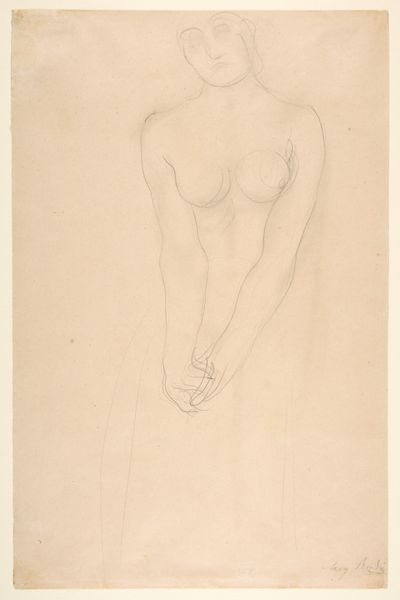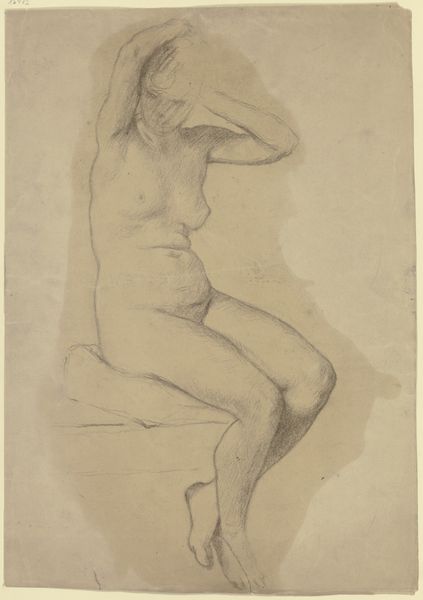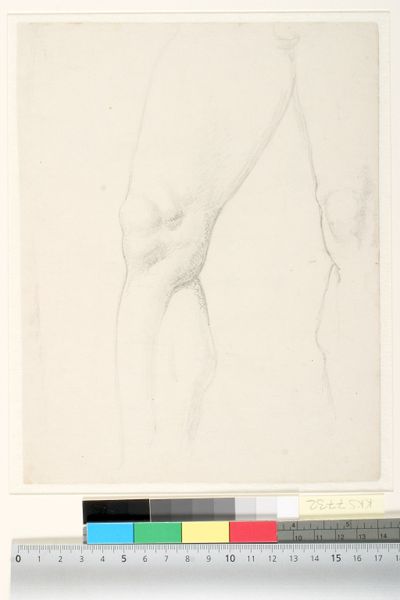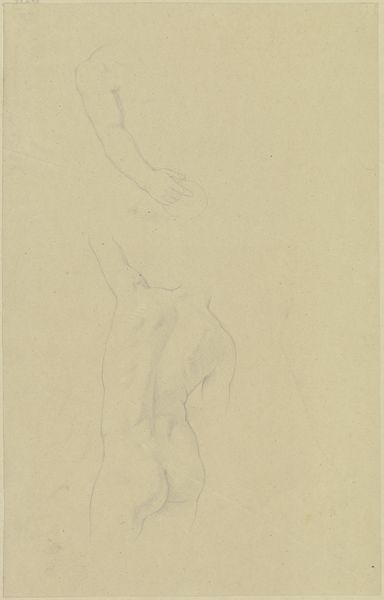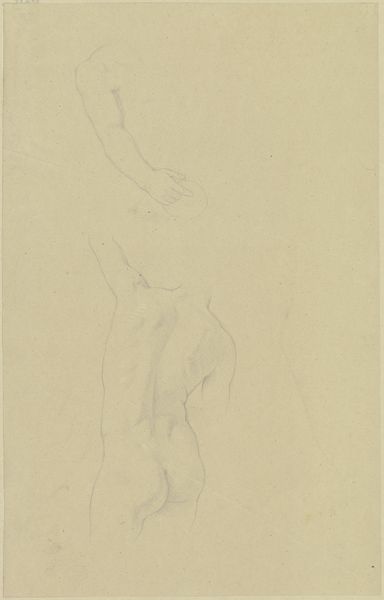
Study of a Girl's Legs for the painting "Young Spartans" 1855 - 1867
0:00
0:00
drawing, print, pencil
#
portrait
#
drawing
# print
#
impressionism
#
figuration
#
pencil drawing
#
pencil
#
france
#
portrait drawing
#
academic-art
#
nude
#
realism
Dimensions: Sheet: 16 3/16 x 11 1/4 in. (41.1 x 28.5cm)
Copyright: Public Domain
Curator: This pencil drawing, created by Edgar Degas between 1855 and 1860, offers a fascinating study of a girl's legs. The piece, titled "Study of a Girl's Legs for the painting 'Young Spartans'," currently resides here at the Metropolitan Museum of Art. Editor: My first impression is one of surprising tenderness. Given the anatomical focus, I expected a more clinical rendering. Instead, there's a delicate softness, almost a fragility, communicated through the medium. Curator: The strategic deployment of the pencil creates an effect I would qualify as strategic tonal modelling. Observe the subtlest variation in values, delineating muscle and form, with a subdued naturalism reminiscent of academic practices tempered with a burgeoning impressionistic touch. Editor: Those long, slender legs crossing. The implied movement…it evokes that classical Grecian ideal: the pursuit of physical perfection. There's a palpable energy – the anticipation of youthful athleticism – it transcends the mere anatomical study. Does it convey that rigor demanded from Spartan children? Curator: Degas's exploration moves far beyond pure aestheticism. He deconstructs conventional notions of the human form by isolating components. What some dismiss as 'merely a fragment' transcends reduction; in reality, the essence, both aesthetic and dynamic, of the artwork shifts onto the leg structures. Semiotically speaking, the metonymic significance is clear: the drawing of this physical entity is meant to stand for the representation of "Young Spartans." Editor: Absolutely, and think about the cultural weight of bare feet. These aren’t adorned, privileged limbs. It suggests an unpretentious state of physical engagement, grounding both the subject and the observer to a simpler state of being. An almost Eden-like symbol of early Greek purity, when civilization supposedly stood at a formative moment in its arc of historical influence. Curator: Such a perspective elucidates our interpretation of the artwork through historical, societal, and figurative references. From a formalism point of view, what Degas achieve in this artwork through such a selected focus shows what visuality means, regardless of whether this implies full figures of human beings or body parts only. Editor: It prompts me to think differently about youth and the weight of cultural expectations represented by physical form, and what visual echoes, however abstracted, can provoke. Curator: Precisely; Degas manages to bridge a study of the human anatomy and timeless visual components to achieve visual resonance in the observer’s aesthetic conscience.
Comments
No comments
Be the first to comment and join the conversation on the ultimate creative platform.
